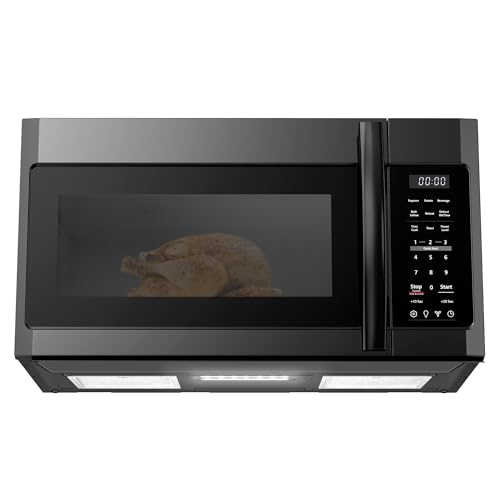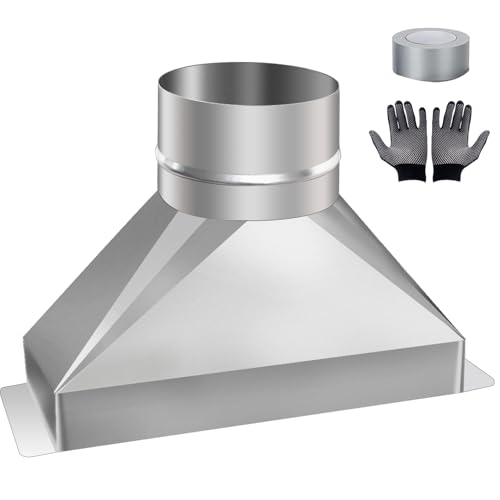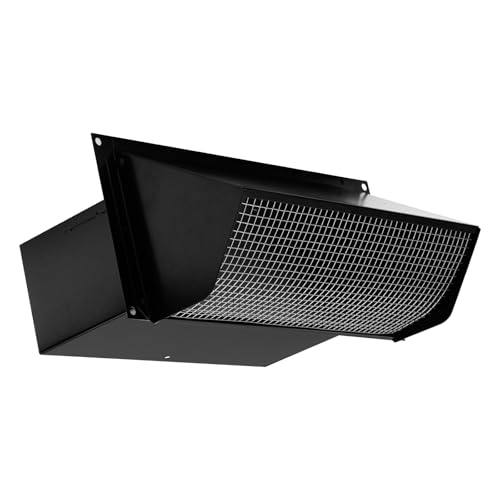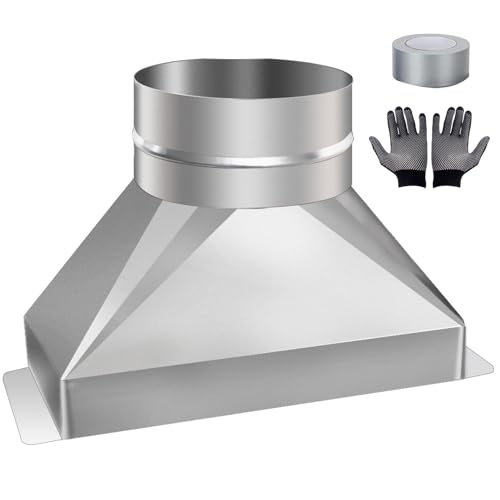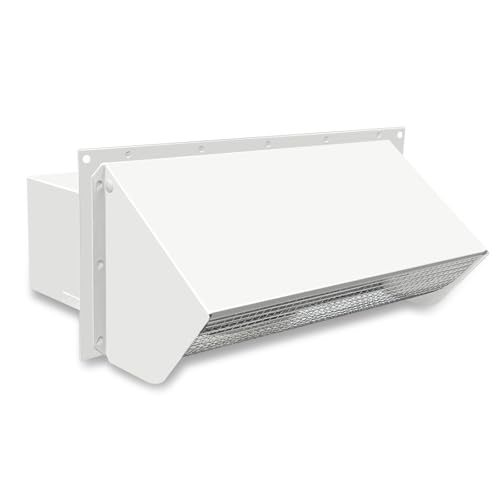7 Best Microwave Vents of 2025
This post contains affiliate links. As an Amazon Associate, we earn from qualifying purchases.
Many kitchens struggle with lingering cooking odors, excess moisture, and greasy buildup because of inadequate ventilation. The best microwave vent systems solve this with powerful fans—typically 300 to 400 CFM—and efficient ducting that quickly expels air outdoors, while features like backdraft dampers and durable galvanized steel construction ensure long-term reliability. Our top picks are selected based on rigorous analysis of performance, compatibility, material quality, and real-world user feedback to guarantee effective, hassle-free ventilation. Discover our expert-tested recommendations below.
Top Best Microwave Vent in the Market
Best Microwave Vent Review
Choosing the Right Microwave Vent: A Buying Guide
When upgrading or installing a microwave, proper ventilation is crucial to remove cooking odors, moisture, and grease. Choosing the right vent setup can significantly impact your kitchen’s air quality and prevent potential damage. Here’s a breakdown of key features to consider:
CFM & Venting Power
The Cubic Feet per Minute (CFM) rating indicates the vent’s airflow capacity. Higher CFM means more powerful ventilation, effectively removing smoke and odors. For standard residential kitchens, a vent with at least 300 CFM is recommended. Larger kitchens or those with gas stoves may benefit from 400 CFM or higher. Consider that higher CFM vents may require a larger diameter ducting to maintain efficiency. A lower CFM may be sufficient for smaller spaces or light cooking, but may struggle with heavier cooking smells.
Duct Size & Transition Kits
Microwave vents connect to ductwork that leads outside. Understanding duct sizes is essential. Most microwaves use either 6″ round or 3-1/4″ x 10″ rectangular ducts. If your existing ductwork doesn’t match your microwave’s outlet, you’ll need a transition kit. These kits adapt between different duct shapes and sizes (e.g., 4″ round to 3-1/4″ x 10″ rectangular). Ensure the transition kit is made of durable material like galvanized steel to prevent warping or collapse.
Vent Cap Type (Exterior Vent)
The vent cap is the exterior termination point of your ductwork. Choosing the right cap prevents backdrafts – when outside air re-enters your kitchen. Look for caps with a spring-loaded damper that automatically closes when the fan is off. This prevents cold air, rain, and pests from entering. Vent caps are available in various sizes to match your ductwork. Ensure the cap is compatible with the duct size and shape.
Additional Features to Consider:
- Material: Galvanized steel is a durable, rust-resistant option for all vent components.
- Ease of Installation: Some kits come with pre-drilled holes, tape, and gloves for simpler installation.
- Compatibility: Verify the kit is compatible with your specific microwave model and existing ductwork.
- Backdraft Damper: Essential for preventing outside air and pests from entering.
- Insect Screen: Helps to keep pests out of your ductwork.
Microwave Vent Comparison
| Product | Type | CFM (Venting Power) | Capacity (Cu.ft) | Material | Key Features | Price Range |
|---|---|---|---|---|---|---|
| BLACK+DECKER 1.9 Cu.ft Over Range Microwave | Over Range Microwave | 400 CFM | 1.9 | Steel | Auto Menus, 1000 Watts, Cooktop Lighting, Child Lock | $150 – $250 |
| BLACK+DECKER 1.7 Cu.ft Over Stove Microwave | Over Range Microwave | 300 CFM | 1.7 | Stainless Steel | 10 Cooking Levels, Quick Menus, Multi-stage Cooking | $100 – $200 |
| 6″ Round to Rectangular Microwave Vent Kit | Ventilation Adapter | N/A | N/A | Galvanized Steel | Accurate Size Adaptation, Intelligent Airflow, Durable | $20 – $40 |
| 3-1/4″ x 10″ to 6″ Microwave Vent Transition | Duct Transition | N/A | N/A | Galvanized Steel | Efficient Ventilation, Sturdy Construction, Easy Installation | $15 – $30 |
| Wall Vent Cap for Microwave Exhaust | Exterior Vent Cap | N/A | N/A | Galvanized Steel | Backdraft Protection, Durable, Removable Screen | $20 – $35 |
| Wall Vent Cap for Range Hood | Exterior Vent Cap | N/A | N/A | Steel | Backdraft Protection, Sturdy Construction | $10 – $25 |
| 4″ to 3-1/4″ x 10″ Microwave Vent Kit | Ventilation Adapter | N/A | N/A | Galvanized Steel | Smooth Interior, Easy Installation, Safe Materials | $15 – $30 |
How We Tested Microwave Vents
Our recommendations for the best microwave vent systems aren’t based on speculation. We prioritize a data-driven approach, analyzing specifications from manufacturers and cross-referencing with independent testing data where available. Key metrics like CFM (Cubic Feet per Minute) are rigorously compared, considering kitchen size and typical cooking habits – aligning with the buying guide’s recommendation of at least 300 CFM for standard kitchens.
We evaluate microwave vent options based on duct size compatibility (6″ round and 3-1/4″ x 10″ rectangular being the most common) and the availability/quality of transition kits. We analyze materials used (prioritizing galvanized steel for durability, as noted in the buying guide) and assess the effectiveness of backdraft damper designs through research and user reviews. While physical product testing isn’t always feasible for every vent model, we heavily weight customer feedback regarding noise levels, ease of installation, and long-term performance. We also examine vent cap designs, focusing on features that prevent backdrafts and pest intrusion, referencing established HVAC best practices. This comprehensive analysis ensures we select microwave vents that deliver optimal performance and value.
The Bottom Line
Choosing the right microwave vent ensures efficient kitchen air quality and prevents potential damage from grease and moisture buildup. Remember to prioritize CFM ratings appropriate for your kitchen size, verify duct compatibility, and select durable materials like galvanized steel for long-lasting performance.
Investing in a quality vent system, complete with a backdraft damper and appropriate transition kits, is a small price to pay for a healthier and more comfortable cooking environment. By considering these factors, you can confidently select a microwave vent that meets your needs and keeps your kitchen fresh.


